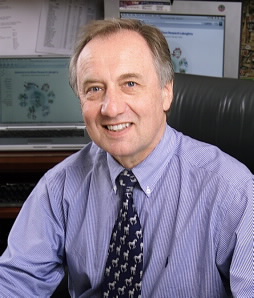EMBARGOED FOR RELEASE | August 21, 2012
Targeting sugars in the quest for a vaccine against HIV — the virus that causes AIDS
Note to journalists: Please report that this research was presented at a meeting of the American Chemical Society.
PHILADELPHIA, Aug. 21, 2012 — As a step toward designing the first effective vaccine against HIV, the virus that causes AIDS, scientists are reporting new insights into how a family of rare, highly potent antibodies bind to HIV and neutralize it — stop it from infecting human cells. The antibodies were isolated from people infected with HIV and work against a wide range of HIV strains. The researchers described the study today at the 244th National Meeting & Exposition of the American Chemical Society, the world’s largest scientific society.
The report was part of a symposium titled “Glycoscience at the Crossroad of Health, Materials and Energy.” It focused on one of the newest and hottest areas of research, named for glycans ― chains of sugars that coat the outer surface of cells in the body like icing on a cake. Glycans are key to various activities, helping cells communicate with one another, for instance. The slightest miscue in glycan formation can result in serious diseases. Reports in the symposium focused on advances toward using knowledge about glycans in medicine and other fields.
Media Contact
During Aug. 17-23, the contacts can be reached at 215-418-2086.
Michael Bernstein
202-872-6042
m_bernstein@acs.org
Michael Woods
202-872-6293
m_woods@acs.org
“The difficulty in preparing a vaccine against HIV lies in the fact that it is ‘variable,’ meaning there are many strains and subtypes, all of which all slightly different,” explained Ian Wilson, D.Sc., who presented the study. “Recently, researchers have identified antibodies that can recognize many subtypes of HIV, not just one. The antibodies came from a few HIV-infected patients out of thousands. If we can determine what parts of the virus those antibodies are binding, then we could use that information to design a single vaccine that could protect people against most or all of the HIV strains and subtypes.”
Worldwide, about 34 million people are infected and living with HIV. About 2.7 million people are newly infected every year — these are infections that an anti-HIV vaccine could prevent. Efforts to develop a vaccine have thwarted scientists and consumed the money of funding agencies and drug companies for almost 30 years.
Vaccines typically consist of a piece of a virus or a killed or inactive version of a virus, which is injected. This “antigen” causes the person’s immune system to make antibodies against the virus. But two types of HIV exist — HIV-1 (the most common form) and HIV-2. Four groups of HIV-1 are known, and at least nine subtypes of Group M (which causes about 90 percent of all HIV-1 infections) exist. And all of these types and groups and subtypes are different; a vaccine designed against one of them would not necessarily work against other subtypes, complicating vaccine development.
Usually, antibodies target proteins of a virus. But HIV is a wolf in sheep’s clothing — it hides its precious proteins under a sugary shield, which is formed from the infected person’s own sugars. That way, the immune system often doesn’t even realize a foreign virus is lurking in its midst.
As a step toward making an effective and broadly neutralizing vaccine, Wilson and colleagues at the IAVI Neutralizing Antibody Center at the Scripps Research Institute analyzed antibodies that have the surprising ability to bind to many subtypes of HIV-1. These antibodies, called PG and PGTs, were isolated in previous work from HIV-infected individuals. His team figured out which parts of HIV several of these antibodies were binding. These unusually potent antibodies can bind to and neutralize up to 80 percent of HIV-1 virus types. Therefore, a vaccine that could prompt the body to make these antibodies would offer wide-ranging protection for an immunized person.
“The new PG and PGT antibodies are relatively rare antibodies that can actually bind to sugars on the glycan shield,” explained Wilson. “But they go even farther. They get through the shield of sugars and manage to contact the protein below.”
It turns out that many of these special antibodies bind to two glycans and a particular portion of a protein to which those sugars attach. “Once we understand this binding, then we can try to design an immunogen, or antigen, that would elicit the production of those antibodies in humans,” he said. Therefore, a vaccine may someday contain two glycans and a piece of protein that resembles the binding site for the PG and PGT antibodies. The researchers in the field call this process “structure-assisted vaccine design.”
Wilson said that it is unclear when a vaccine based on this work would become available. However, the finding that sugars are instrumental to this process just goes to underscore the importance of studying sugars in the laboratory.
The researchers acknowledged funding from the National Institute of Allergy and Infectious Diseases of the National Institutes of Health under award numbers R01AI084817 and P01AI082362, as well as from the International AIDS Vaccine Initiative (IAVI).
To automatically receive news releases from the American Chemical Society contact newsroom@acs.org.
###


